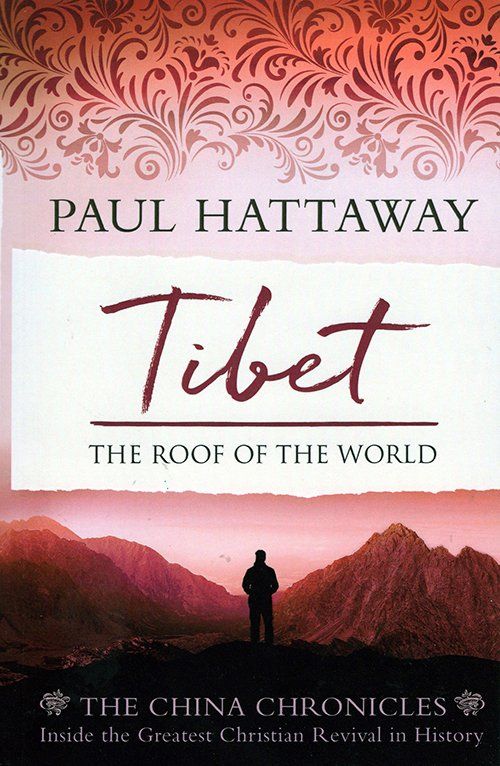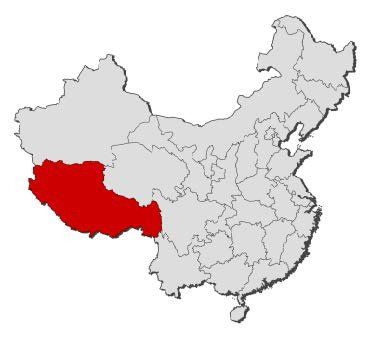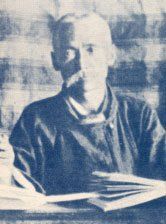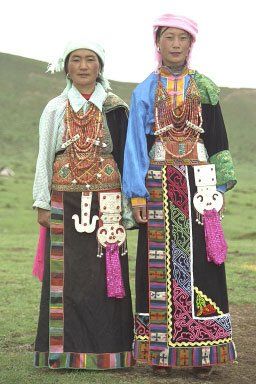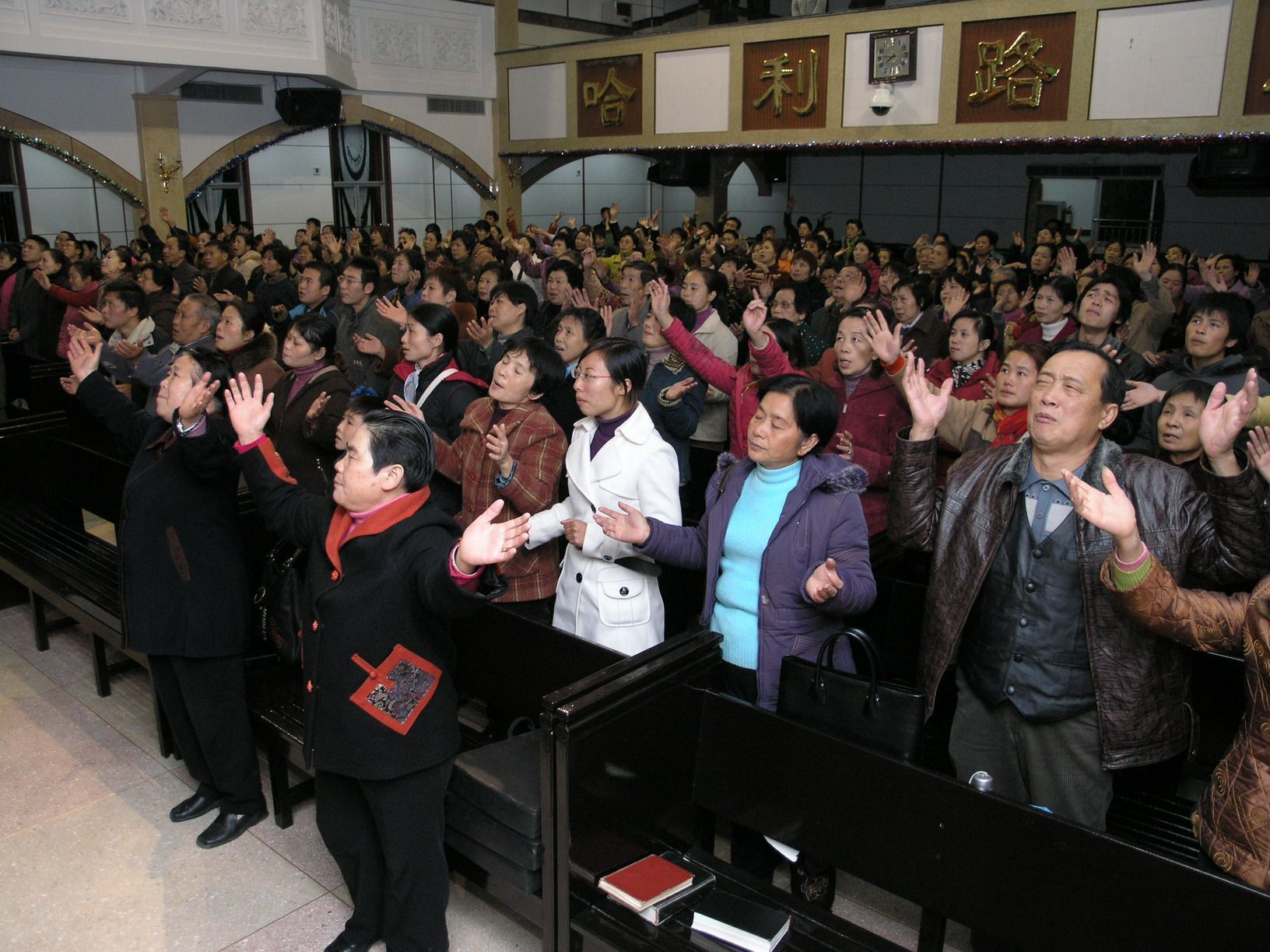Tibet – The Roof of the World
In this newsletter we are pleased to announce the fourth book in our series on the mighty revival that has swept China during the past 50 years. The China Chronicles are proving to be a great encouragement to many and are enriching the spiritual lives of those who read them.
Tibet has long been acknowledged as one of the most difficult challenges for the followers of Jesus to overcome, with the famous pioneer missionary Hudson Taylor once remarking: "To make converts in Tibet is similar to going into a cave to rob a lioness of her cubs."
In 1886, a Chicago businessman, William Blackstone, preached on the subject, ‘The Need of the World and the Work of the Church'. He explained that all people groups must hear the gospel before the glorious return of Jesus Christ, and he stated: "God seems to be holding Tibet back to be the last field entered just before His coming."
Several generations have come and gone since Blackstone's prediction, and Tibet remains one of the last great blocks of humanity yet to give the glory due to the true and Living God.
The remainder of this newsletter is an excerpt from 'TIBET: The Roof of the World'. It shares the gripping story of the 92-year struggle it took to produce the first Tibetan Bible.
To order a copy of the book, please visit our website bookstore. An e-book (kindle) version is also available online.
Alternatively, if you send a donation to any Asia Harvest project, please indicate that you would like a complimentary copy of the book and we will gladly send you one.
Significant discounts are available for bulk orders of this book.
You can buy the first 4 books of the China Chronicles series at a discounted rate here.
The Incredible Story of the Tibetan Bible
Tibet is vast— three times the size of Texas or the United Kingdom, but with only a fraction of the population. We had dozens of epic stories to choose from when considering what to share as an except in this newsletter, but we have opted for the story of how the Tibetan Bible came into existence. This remarkable account gives an insight into the intense demonic opposition faced by all Christians who seek to penetrate the Roof of the World with the Gospel of Jesus Christ.
The story of how the Tibetan Bible finally emerged after a long struggle deserves to be widely shared. It highlights the level of spiritual opposition that Christian work in this dark part of the world invariably attracts.
German Moravian missionaries in north India gave themselves fully to the task of translating the Scriptures into Tibetan in 1856. Incredibly, it was to take nearly a century to complete, with the first full Tibetan Bible finally being printed in 1948. God used a Tibetan family—the Gergens—who helped with the translation work and themselves came to Christ as a result.
Although Tempu Gergan died after falling ill, his 12-year-old son Sonam had listened attentively to all the discussions between his father and the missionaries, and he boldly decided to confess Jesus as Lord and Master. Sonam's decision angered the local Buddhist monks, and great pressure was applied in a bid to make him abandon his new faith. He rebuffed their threats, and when he was publicly baptized headopted the new name of Yoseb (Joseph).
Help from Above
The first Scripture translated into Tibetan was the Gospel of John, published in 1862. Although a portion of the Bible was now available, it was not well received by Tibetans, who struggled to understand the words and concepts it contained, causing many readers to give up in frustration. Years of discouragement ensued as the Tibetan Christians and missionaries tried to share God's Word with Buddhists, only to encounter uniform apathy and disinterest.
From the start, the translators had struggled with what terms to use to accurately portray Christian concepts and names to a completely non-Christian culture. Long discussions and prayer meetings were held to discuss what Tibetan words should be used for God, Savior, and sin, among many others. Each word that was tried had Buddhist connotations, and it seemed impossible to find terms that communicated the beauty of God's Word to a people steeped in superstition and a completely different worldview.
After the Lord helped the translators find a way to communicate His Word, the New Testament was finally completed in 1903, and Yoseb Gergan immediately began to translate the Old Testament.
Although the Tibetan New Testament did not cause revival to break out, it greatly strengthened the small number of Tibetan believers, and the profile of Christianity was enhanced among the Buddhist hierarchy now that God's Word was available for them to read. The abbot of one monastery said: "I have read all the New Testament. Is it true that there is an Old Testament? If so, will you kindly send me all the books? I am very much interested in Christianity."
Wrestling with the Devil
Many more years passed until finally, in 1935, Yoseb Gergan laid down his pen. He had on his desk the first draft of the complete Tibetan Bible! He let out a deep sigh. Now, the Holy Bible would be available to reach the millions of Tibetans living on the vast plateau beyond the mountain passes.
Incredibly, although the translation has been completed, a further 13 years of intense struggle elapsed before the full Tibetan Bible was finally printed, as a succession of extraordinary events threatened to totally destroy the decades of work. It seemed as if every demon in hell had gathered to prevent the Word of God being available in Tibetan.
First, the workers at the Bible Society in India were unable to print the manuscript because they did not possess the technology to do so. At a time long before computers or photocopy machines, the precious manuscript was carefully placed inside a crate and shipped to the headquarters of the Bible Society in Britain.
The Tibetan Bible arrived in London, but as Hitler's forces swept across Europe, the Bible Society was concerned that the valuable manuscripts in their vaults might be destroyed by a Nazi bomb, so they transported the documents to safer rural locations. The Tibetan manuscript was placed in the ancient cathedral at Ripon, 200 miles north of London. As the Battle of Britain raged,
One 2,000-pound missile from the sky landed on a roadway beside Ripon Cathedral and came to rest against the wall of the church without exploding. Four feet away, inside the church's wall, lay the Tibetan manuscript. Gingerly, a bomb demolition crew defused the bomb. The firing device seemed faultless, and they could not understand why it had failed to explode.
By the time the Second World War ended, Yoseb Gergan was 60-years-old. For a decade he had patiently waited for news that his Tibetan Bible had been printed. With Europe in disarray and no sign of progress, he asked for the manuscript to be sent back to India, hoping that new technology would allow it to be printed closer to home.
Alas, the printers in India shook their heads, saying the manuscripts had been written on cheap Tibetan paper and would need to be rewritten on special white paper. Gergan asked God to give him the strength to complete the massive undertaking.
Two more years passed, and Yoseb felt his strength beginning to ebb as he continued working on his life's task. Then disaster struck. After days of feeling dizzy as he worked from sunrise to late at night, he fell to the ground, gasping for breath. Yoseb Gergan (pictured above) had suffered a heart attack.
The members of the small Tibetan church cried out to the Living God, asking Him to have mercy. They had never imagined that their beloved pastor would die before the Bible was in circulation. God heard their prayers, and Yoseb experienced a surge of strength. A special table was constructed so he could continue the work from bed, and two Tibetan scribes were employed to do most of the writing, with Yoseb overseeing their work and making corrections.
Finally, on August 11, 1946, Yoseb Gergan wrote down the Tibetan words for the final verses in the Bible: "Surely I come quickly. Amen. Even so, come, Lord Jesus. The grace of our Lord Jesus Christ be with you all. Amen." (Revelation 22:20-21).
Five days later, Yoseb Gergan closed his eyes one last time, and went to his eternal reward.
A Soggy Pulp
Unsurprisingly, more demonic opposition and roadblocks had to be overcome before the Tibetan Bible was finally in circulation. The rewritten manuscript had to be taken on the back of a mule across steep Himalayan mountain passes, and a young Tibetan named Sandrup was employed to deliver the manuscript. The journey was expected to take 50 days, and from there the manuscript would be sent on to the city of Lahore, where the Indian Bible Society was located.
Months went by without any word from Sandrup. He, and his precious cargo, had simply vanished in the remote mountains. The believers worried that he had been murdered by bandits or had encountered some other disaster.
Thankfully, additional sets of proofs had been made by Yoseb Gergan before he died. They were given to a Christian named Bahadur, who retraced the steps of the missing Sandrup. As Bahadur crossed a mountain pass, a massive electrical storm came rolling up from the valley below. He pulled his horse behind a large boulder and squatted close to the ground, waiting for the storm to pass as hailstones the size of eggs smashed into his back and neck. Suddenly,
There was a searing flash of light followed by the crash of thunder. The horse tried to bolt into the darkness, but Bahadur restrained it with tremendous effort. Flash after flash of lightning glanced off the rocks around them, filling the air with the heavy smell of scorched earth. The thunder roared as though the demons of hell had gathered to defy the terrified traveler. Torrential rain followed the hail, pouring from the heavens like a waterfall.
‘Oh God,' he cried, ‘help me now. Deliver me from Satan and his evil host. Protect your Book!' His shouted prayer was answered by another flash of lightning, which laid him out insensible on the ground.
When he revived, the storm had passed. Bahadur noticed that all was quiet, and he suddenly realized he was stone deaf. It would be weeks before he would hear a sound, and then only faintly, as the storm had split his eardrums."
Bahadur bravely soldiered on, and finally reached his destination. The scribes came running out to welcome him, but when the saddle bags were opened, a soggy mass of paper fell to the ground. The storm had succeeded in filling the bags with water. Bahadur tried to pick up the sticky mess, but it was no use. His journey had accomplished nothing. He called God to witness what the devil had done to the precious papers.
One Final Effort
The Bible Society workers realized they were in an intense spiritual battle that required a far greater power than mere human effort to overcome, so they petitioned Christians around the world to intercede for the success of the Tibetan Bible project.
After another delay, a third set of proofs was prepared. Meanwhile, the body of Sandrup, the first courier, had been found at the bottom of a steep cliff. He had perished in an avalanche.
Due to the outbreak of war which led to the formation of Pakistan as a separate country in 1947, the project leaders found that it wasn't safe to send the manuscript to Lahore for printing. It would have to be personally carried across more dangerous mountains, and one of the Tibetan scribes, Gappel, volunteered to undertake the long journey. He entered the war zone, and for months not a word was heard from him.
Four months later, as the Bible Society workers were starting to give up hope of ever seeing Gappel or the manuscript again, news emerged that he was holed up in a little hut in Kashmir. His way to Lahore was blocked by soldiers, but after another series of divine interventions, the manuscript finally arrived in Lahore, where Gappel began to put the finishing touches to the work.
The searing heat and humidity of Lahore soon made Gappel ill, as he had spent his entire life in the crisp air of the Himalayas. Two large fans were installed in his room, and large blocks of ice were placed in front of the struggling Tibetan. His spirit was immediately revived by the cool environment.
With Gappel working up to 20 hours a day to finish the task so he could return home, progress was swift, and the wonderful day finally arrived in August 1948, when the first ever copy of the full Tibetan Bible rolled off the press! It had taken 92 years of struggle and prayer.
God's Word Goes Forth
As soon as his job was done, Gappel hastily headed back to his home in the mountains, and an initial print-run of 5,000 Tibetan Bibles was dispatched to expectant missionaries and Tibetan Christians on both sides of the Himalayan divide.
One recipient of a new Tibetan Bible was Tenzin Gyatso, the Fourteenth and current Dalai Lama, who had fled from Tibet into north India. When a missionary presented him with a brand new copy of the Holy Bible, the Dalai Lama exclaimed, "Thank you! I have heard about this Book. I am told it speaks of the great God who became a man and lived on earth."
After the Communists seized control of Tibet, hundreds of thousands of Buddhist monks were arrested and sent to prison labor camps, where many died after facing horrific cruelties. A Bible reached one imprisoned monk, who after being deeply touched by the words he read, penned a letter in beautiful flowing Tibetan:
"Dear unknown friends. The book you have sent over the mountains has come to my lonely cell. My soul is strangely stirred as I read these words. Light has come to my poor darkened soul. Please send me more light.'
For many years Asia Harvest has helped spread the Gospel throughout the Tibetan Plateau. Literature, audio and video resources that communicate the Gospel in Tibetan have been distributed. We currently support many ethnic-Tibetan evangelists who work inside Tibetan areas of China, and in the border areas of Nepal, Bhutan and India.
Evangelists can be supported for $25 per month each. If you would like to support one or more of these workers, we invite you to do so through our Asian Workers' Fund. Please add a note "Tibetan worker" when you send your gift. A prayer card and occasional updates will be sent to every regular supporter of this project.
E-Newsletter Sign Up
RECENT POSTS

"Feel free to share this message with interested Christians or on social media" - Asia Harvest

